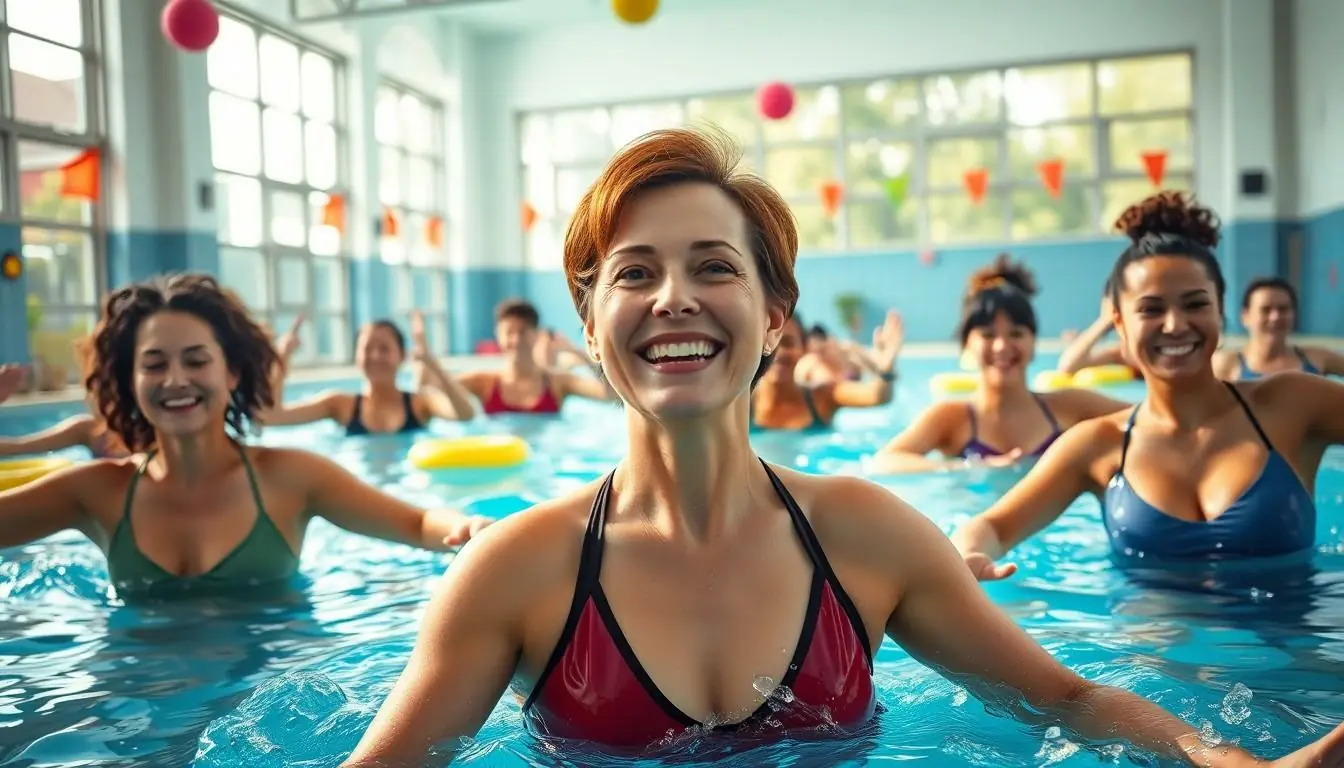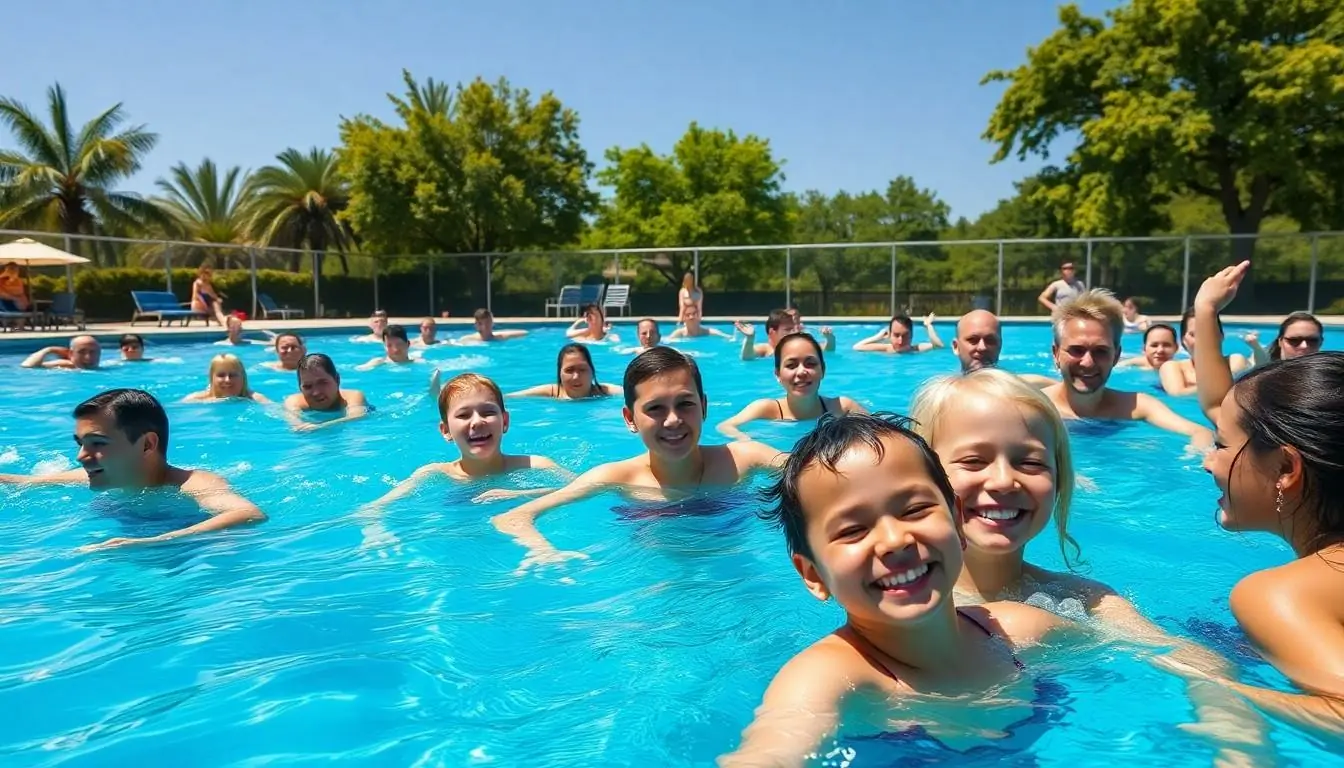Diving into fitness can feel daunting, but what if the solution is as simple as making a splash? Swimming for exercise isn’t just for Olympic hopefuls or kids at summer camp; it’s a refreshing way to get fit while having fun. Picture this: gliding through cool water, feeling weightless, and burning calories faster than you can say “cannonball.”
Table of Contents
ToggleBenefits Of Swimming For Exercise
Swimming offers extensive benefits, enhancing both physical and mental well-being.
Physical Health Advantages
Swimming promotes cardiovascular fitness, strengthening the heart and increasing lung capacity. Engaging in regular swimming reduces risks of chronic diseases, such as heart disease and diabetes. It also provides a low-impact workout, ideal for individuals of all ages and fitness levels. Muscles tone and strengthen through various strokes, helping to build endurance and flexibility. According to the Centers for Disease Control and Prevention (CDC), swimming burns approximately 400 to 700 calories per hour, depending on intensity. Recovery from injury improves with swimming, as the buoyancy of water alleviates stress on joints.
Mental Health Benefits
Swimming significantly reduces stress levels, promoting relaxation through rhythmic movements. Engaging in the activity boosts mood by releasing endorphins, enhancing overall emotional well-being. Regular swimmers report improved sleep quality, contributing to feelings of restfulness. Mental clarity often follows swimming sessions, as the focus on breathing and technique acts as a form of meditation. Social interaction occurs in pools, fostering a sense of community and support. Research from the American Psychological Association highlights swimming’s effectiveness in alleviating symptoms of anxiety and depression.
Types Of Swimming Exercises

Swimming offers various exercises that cater to different fitness levels and goals. Each type provides unique benefits and keeps workouts engaging.
Lap Swimming
Lap swimming combines intensity and endurance. Swimmers can perform continuous strokes across a pool, targeting major muscle groups while enhancing cardiovascular health. Freestyle, breaststroke, backstroke, and butterfly are common strokes used during laps. This structured exercise allows individuals to keep track of distance and improve speed over time. Establishing a routine with lap swimming boosts stamina and burns significant calories, making it an effective fat-burning workout. A 30-minute session can help burn approximately 300 to 400 calories, depending on the swimmer’s weight and stroke intensity.
Water Aerobics
Water aerobics delivers a low-impact workout that combines strength and endurance training. Participants perform exercises such as jumping jacks, leg lifts, and arm movements in shallow water. Resistance from water increases the challenge, allowing for muscle toning and enhanced flexibility. Classes often incorporate music to create an enjoyable atmosphere. This group setting fosters camaraderie among participants, enhancing motivation. Studies show water aerobics can burn around 200 to 300 calories in one hour, making it suitable for all ages and fitness levels.
Techniques For Effective Swimming
Effective swimming relies on mastering proper form and technique. Maintaining a streamlined body position reduces drag. Swimmers should engage core muscles to enhance stability. Elbows must remain slightly bent during strokes, optimizing energy use. Kicking from the hips instead of the knees promotes efficiency. Regularly checking stroke mechanics improves overall performance. Focusing on balanced movements fosters consistency and reduces fatigue.
Breathing techniques play a vital role in swimming efficiency. Inhale through the mouth during the stroke’s recovery phase. Exhale through the nose while submerged, maintaining a steady rhythm. Timing breaths with stroke cycles minimizes disruption and maximizes oxygen intake. Practicing side breathing helps improve comfort in open-water conditions. Regular drills emphasizing breath control can enhance lung capacity. Swimmers should aim for rhythmic breaths, ensuring fluidity throughout their sessions.
Safety Considerations
Swimming offers many benefits, but awareness of safety is crucial. Pool environments and open water settings pose unique challenges that should be addressed.
Avoiding Common Injuries
Injury prevention forms an essential aspect of swimming safely. Swimmers should warm up before entering the water to prepare their muscles. Overuse injuries often stem from incorrect technique or fatigue. Practicing proper form reduces strain on joints and muscles. Engaging in a balanced workout routine helps to build strength and flexibility. Stretching afterwards aids in recovery, preventing stiffness and soreness. Moderate training volumes enhance endurance while minimizing the risk of injury. Swimmers should listen to their bodies; ignoring signs of pain can lead to serious conditions.
Swimming Pool Etiquette
Adhering to pool etiquette promotes a safe and enjoyable environment for everyone. Swimmers should always be aware of their surroundings and not disrupt others. When entering, it’s best to look for available lanes and wait until it’s safe to jump in. Respect lane designations, ensuring that faster swimmers can pass. Line up behind slower swimmers during shared lanes, allowing for smooth flow. Engaging in quiet communication minimizes distractions and supports focus on technique. Cleaning up personal items after use keeps the area tidy, showing consideration for others. Respecting these guidelines not only enhances the swimming experience but also fosters a positive community.
Swimming stands out as a versatile and enjoyable exercise option that caters to individuals of all ages and fitness levels. Its unique combination of physical and mental benefits makes it an ideal choice for anyone looking to improve their health. From enhancing cardiovascular fitness to promoting mental clarity and reducing stress, swimming offers a holistic approach to wellness.
With various styles and techniques available, swimmers can easily tailor their workouts to meet personal goals. Whether engaging in lap swimming or water aerobics, the possibilities for fun and effective exercise are endless. By prioritizing safety and proper technique, individuals can maximize their swimming experience while fostering a supportive community. Embracing swimming as a regular part of one’s routine can lead to lasting health benefits and an invigorating way to stay active.





